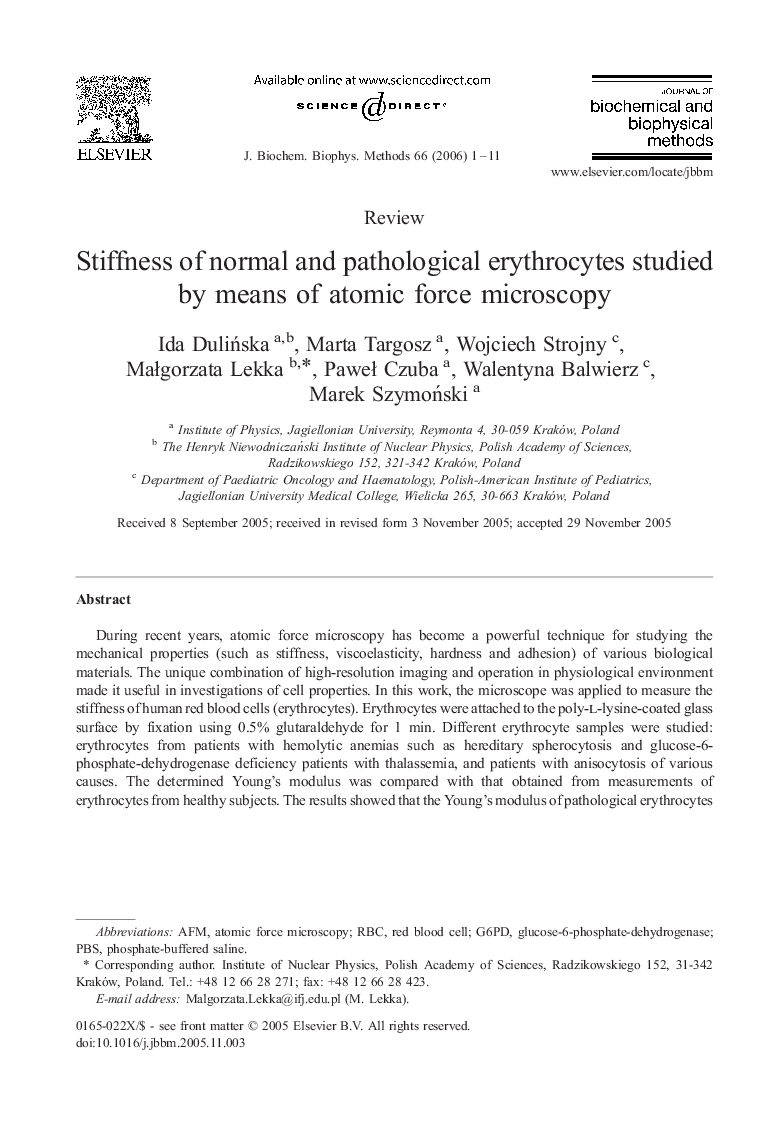| Article ID | Journal | Published Year | Pages | File Type |
|---|---|---|---|---|
| 1988645 | Journal of Biochemical and Biophysical Methods | 2006 | 11 Pages |
During recent years, atomic force microscopy has become a powerful technique for studying the mechanical properties (such as stiffness, viscoelasticity, hardness and adhesion) of various biological materials. The unique combination of high-resolution imaging and operation in physiological environment made it useful in investigations of cell properties. In this work, the microscope was applied to measure the stiffness of human red blood cells (erythrocytes). Erythrocytes were attached to the poly-l-lysine-coated glass surface by fixation using 0.5% glutaraldehyde for 1 min. Different erythrocyte samples were studied: erythrocytes from patients with hemolytic anemias such as hereditary spherocytosis and glucose-6-phosphate-dehydrogenase deficiency patients with thalassemia, and patients with anisocytosis of various causes. The determined Young's modulus was compared with that obtained from measurements of erythrocytes from healthy subjects. The results showed that the Young's modulus of pathological erythrocytes was higher than in normal cells. Observed differences indicate possible changes in the organization of cell cytoskeleton associated with various diseases.
